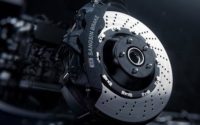Aluminum has many advantages, such as light weight, corrosion resistance and electrical conductivity. Engineers at the Georgia Institute of Technology are also using the material to improve lithium-ion batteries. Their new system could enable electric vehicles to run longer on a single charge and would be cheaper to mass-produce.
A good battery needs two things: high energy density to power devices, and stability, so it can be safely and reliably recharged thousands of times. For the past three decades, lithium-ion batteries have reigned supreme.
But, manufacturers are starting to stretch the limits of lithium-ion technology. Next-generation EVs demand lighter, longer-range alternatives.
The Georgia Tech engineers are developing a safer, cheaper and more powerful alternative to lithium-ion batteries. They’re using aluminum foil to create batteries with higher energy density and greater stability.
“We are always looking for batteries with higher energy density, which would enable electric vehicles to drive for longer distances on a charge,” says Matthew McDowell, Ph.D., an associate professor of mechanical engineering and material science at Georgia Tech. “It’s interesting that we can use aluminum as a battery material, because it’s cost-effective, highly recyclable and easy to work with.”
According to McDowell, the idea of using aluminum to make batteries isn’t new. The concept was pioneered in the 1970s, but it didn’t work well.
When used in a conventional lithium-ion battery, aluminum fractures and fails within a few charge-discharge cycles, due to expansion and contraction as lithium travels in and out of the material.
The dawn of solid-state batteries prompted engineers to take a new look at the material. While lithium-ion batteries contain a flammable liquid that can lead to fires, solid-state batteries contain a solid material that’s not flammable and, therefore, likely safer. Solid-state batteries also enable the integration of new high-performance active materials.
The R&D initiative began as a collaboration between McDowell’s team and Novelis, a leading manufacturer of aluminum, as part of the Novelis Innovation Hub at Georgia Tech. The engineers knew that aluminum would have energy, cost and manufacturing benefits when used as a material in the battery’s anode, but pure aluminum foils were failing rapidly when tested in batteries.
McDowell and his colleagues decided to take a different approach. Instead of using pure aluminum in the foils, they added small amounts of other materials to the aluminum to create foils with particular microstructures. They tested more than 100 different materials to understand how they would behave in batteries.
The aluminum foil anode demonstrated dramatically improved performance and stability when implemented in solid-state batteries. It could store more lithium than conventional anode materials, and therefore more energy.
“One of the benefits of our aluminum anode that we’re excited about is that it enables performance improvements, but it also can be very cost-effective,” claims McDowell. “On top of that, when using a foil directly as a battery component, we actually remove a lot of the manufacturing steps that would normally be required to produce a battery material.”
McDowell believes the new technology could be beneficial for new EVs under development, such as short-range electric aircraft, but the limiting factor is batteries. Today’s batteries do not hold enough energy to power aircraft to fly distances greater than 150 miles or so.
The Georgia Tech engineers are currently working to scale up the size of the batteries to understand how size influences the aluminum’s behavior. They’re also exploring other materials and microstructures with the goal of creating very cheap foils for battery systems.
“This is a story about a material that was known about for a long time, but was largely abandoned early on in battery development,” says McDowell. “But, with new knowledge, combined with a new technology—the solid-state battery—we’ve figured out how we can rejuvenate the idea and achieve really promising performance.”





